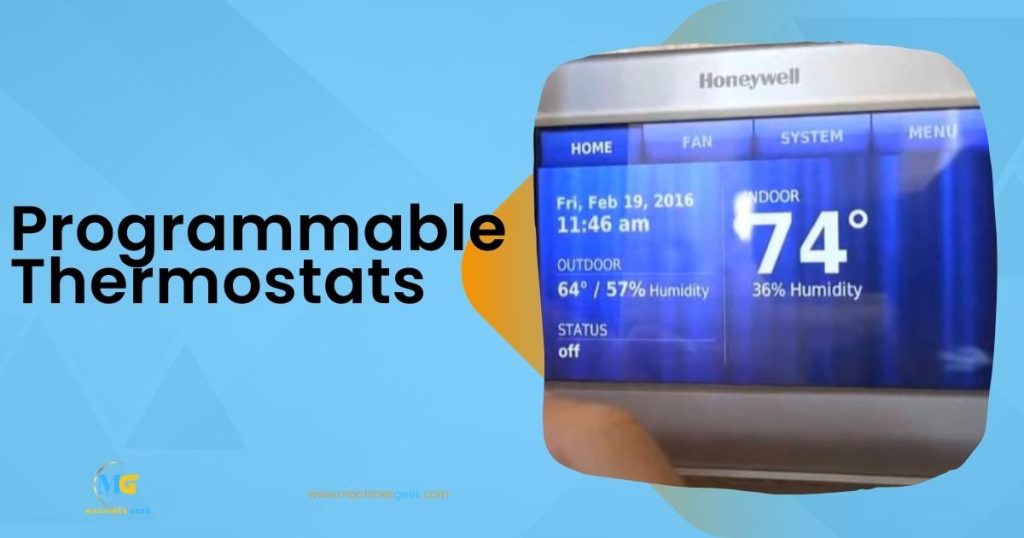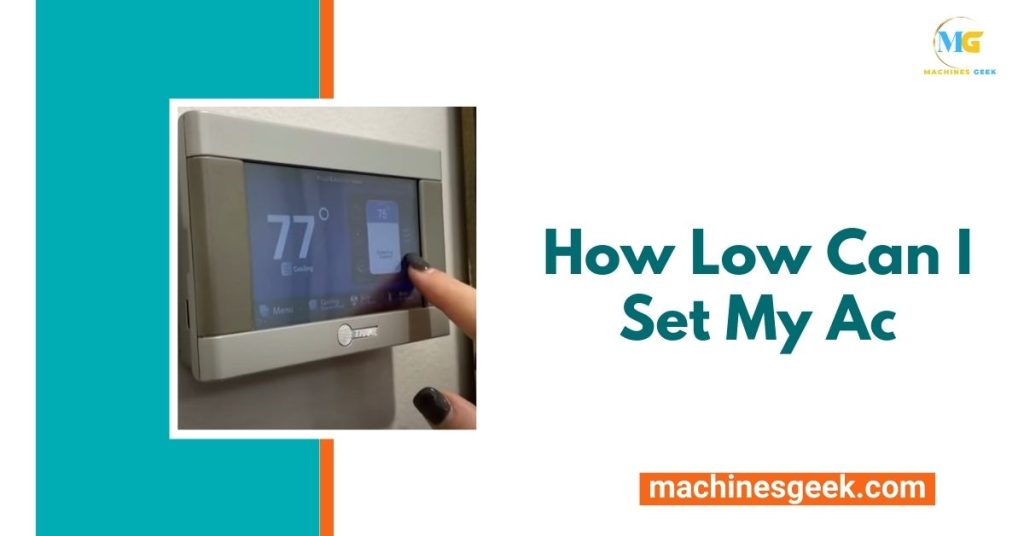How Low Can I Set My Ac? The lowest AC temperature setting may vary depending on factors such as the size of your AC unit, the outside temperature, and personal comfort preferences. However, it is generally recommended to set your AC between 72-78 degrees Fahrenheit for optimal energy efficiency and comfort.
Introduction (120 words): Setting the right temperature for your AC unit is crucial in ensuring a comfortable indoor environment while also being mindful of energy consumption. However, finding the ideal balance can be quite challenging. The lowest AC temperature setting that you can choose largely depends on several factors, such as the size and efficiency of your AC unit, the outdoor temperature, and your personal comfort preferences.
While some individuals prefer a chilly indoor climate, others may find a slightly higher temperature more comfortable. Additionally, setting your AC at unnecessarily low temperatures can lead to increased energy consumption and higher utility bills. This article aims to provide guidance on how low you can set your AC without compromising efficiency, comfort, and energy savings.
Optimal Temperature Settings For Ac Usage
When setting the temperature of your AC, it is important to consider both energy efficiency and personal comfort. For optimal energy efficiency, it is recommended to set your thermostat to the highest temperature that is still comfortable for you. According to the U.S. Department of Energy, setting your thermostat to around 78°F (25°C) during the summer months can help reduce energy consumption.
However, it is important to find a balance between comfort and energy savings. Factors such as humidity, personal preferences, and insulation levels in your home can influence the ideal temperature setting. Maintaining a consistent temperature, rather than frequently changing it, can also help improve AC efficiency. Additionally, using programmable thermostats, which allow you to adjust the temperature based on your schedule, can help optimize energy usage.
Factors to consider for setting your AC temperature:
1. Personal comfort and preferences
2. Humidity levels in your area
3. Insulation levels in your home
4. Energy efficiency goals
5. Programmable thermostat usage
The Ac Temperature Range
Understanding the temperature range of your air conditioner is essential for ensuring optimal comfort and energy efficiency. Different AC models have various temperature limits that you can set according to your preference and needs. The temperature settings typically range from around 60°F to 86°F (15°C to 30°C). It’s crucial to note that setting your AC temperature too low can increase energy consumption and may not provide any additional cooling benefits.
When considering the temperature range, the climate and location where you live also play a significant role. In hot and humid climates, lower temperature settings may be required to achieve a comfortable indoor environment, while in cooler climates, higher temperature settings may be sufficient. Understanding your local climate can help you optimize your AC settings to balance comfort and energy efficiency.
| AC Model | Temperature Limits |
|---|---|
| Portable AC | 60°F to 86°F (15°C to 30°C) |
| Window AC | 60°F to 86°F (15°C to 30°C) |
| Split AC | 60°F to 86°F (15°C to 30°C) |
Keep in mind that setting your AC temperature to the highest comfortable level can help save energy and reduce costs. Consider using programmable thermostats or smart AC controls to automatically adjust the temperature based on your preferences and schedule while ensuring efficient operation.
Energy Efficiency Tips For Setting Ac Temperature

Energy efficiency is a top priority when it comes to setting the temperature on your AC. Utilizing programmable thermostats is a great way to achieve precise temperature control and maximize efficiency. These smart devices allow you to set different temperatures for different times of the day, ensuring that your AC is only running when needed. By avoiding excessive cooling, you can also save on energy costs.
Make sure to set your AC temperature at a comfortable level instead of cranking it down too low, as each degree cooler can significantly increase energy usage. Additionally, regularly maintaining your AC unit by cleaning filters, sealing leaks, and checking for proper insulation can further enhance energy efficiency. With these simple tips, you can keep your home cool and comfortable while minimizing your carbon footprint.
Health And Comfort Considerations
In order to find the optimal setting for your AC, it’s important to take into account both health and comfort considerations. While a lower AC temperature may provide temporary relief in hot weather, it can also have negative effects on your health and overall comfort.
Extreme temperature fluctuations caused by a low AC setting can lead to health issues such as respiratory problems, dehydration, and fatigue. It can also result in discomfort, including dry skin, irritated eyes, and even muscle stiffness.
Finding the sweet spot for your personal comfort level is crucial. It’s recommended to keep the temperature setting around 72-78 degrees Fahrenheit (22-26 degrees Celsius) to maintain a comfortable and healthy indoor environment.
Preventing health issues related to extreme temperature fluctuations is essential. Ensure that your AC is properly maintained and serviced regularly to keep it functioning efficiently. Additionally, consider using fans or other cooling methods to supplement your AC and maintain a consistent temperature.
Pitfalls Of Setting Ac Temperature Too Low
Setting your AC temperature too low can lead to a range of potential problems that can impact its performance, lifespan, and energy consumption. While you may think that cranking down the temperature will cool your home faster, it actually forces your AC system to work harder, resulting in increased energy usage and potential wear and tear.
Impact on AC performance, system lifespan, and energy consumption:
- Excessive strain on the AC compressor and other components can lead to premature system failure.
- Running the AC at very low temperatures can result in higher energy bills and inefficient cooling.
- The constant cycling on and off can also put additional stress on the system, reducing its lifespan.
Identifying signs that your AC is working too hard due to low temperature:
- Frequent AC system cycling
- Uneven cooling or hot spots in certain areas of your home
- Increased humidity levels
- Unusual noises or vibrations coming from the AC unit
- Higher energy bills despite not using the AC more frequently
Balancing Energy Savings And Comfort Level
When trying to find the right balance between energy savings and personal comfort in your home, there are several strategies you can employ. One effective method is to adjust the temperature settings based on your daily routines and occupancy. For example, if you are away from home during the day, consider setting your AC to a slightly higher temperature to save energy.
You can also utilize zoning systems to cool specific areas of your home that are in use, rather than cooling the entire space. Another option is to invest in smart devices that allow for personalized comfort. These devices can learn your preferences and adjust the temperature accordingly, ensuring maximum comfort while still saving energy.
Addressing Common Myths About Ac Temperature Settings
One prevalent myth is that setting a lower temperature on the AC unit will result in faster cooling. In reality, the AC unit operates at a consistent speed regardless of the temperature setting. The cooling process is not affected by a lower temperature setting; it simply runs longer to achieve the desired temperature.
Insulation and air leakage play a crucial role in the efficiency of the AC unit. Proper insulation prevents cool air from escaping, maintaining a comfortable temperature indoors. On the other hand, air leakage can make the AC work harder to cool the space, resulting in energy wastage.
Utilizing Additional Cooling Methods In Conjunction With Ac Usage
Supplementary methods for cooling your space without solely relying on the AC
Using fans, window coverings, and ventilation techniques can enhance the efficiency of your cooling system. Fans are a cost-effective way to circulate air and create a cooling breeze. Placing them strategically in your space can help distribute cool air effectively. Window coverings such as blinds or curtains can help block out the heat from sunlight and prevent it from entering your space. This can significantly reduce the load on your AC. Ventilation techniques like opening windows during cooler times of the day or using exhaust fans can help remove hot air and bring in fresh, cooler air.
Optimizing your AC alongside these additional cooling methods can maximize your comfort. Set your AC thermostat to a moderate temperature and avoid extreme settings, as this can lead to excessive energy consumption. Regularly clean and maintain your AC system to ensure it functions at its best. By utilizing a combination of AC and supplementary cooling methods, you can create a comfortable and energy-efficient living environment.
Can I Adjust the Temperature of My Honeywell AC to a Low Setting?
Yes, you can definitely turn on your Honeywell AC and adjust the temperature to a low setting. The Honeywell AC comes with a thermostat that allows you to set your desired temperature for maximum comfort. Simply use the controls to lower the temperature to your preferred level.
Frequently Asked Questions
How Low Can I Set My Ac Temperature?
You can set your AC as low as your comfort level allows. However, keeping it between 68-72°F is recommended for energy efficiency and optimal cooling.
Will Setting My Ac To A Lower Temperature Cool My Room Faster?
No, setting your AC to a lower temperature will not cool your room faster. ACs work at a consistent pace, regardless of the temperature setting.
Can Setting My Ac Temperature Too Low Be Harmful?
Yes, setting your AC temperature too low can be harmful as it puts a strain on the unit and increases energy consumption. Aim for a comfortable temperature range instead.
Conclusion
Setting your AC temperature too low can have negative consequences on your energy consumption and the environment. Finding a balance between comfort and efficiency is crucial. By following the AC manufacturer’s guidelines and considering factors such as insulation and outdoor temperature, you can optimize your AC’s settings for maximum efficiency without compromising your comfort.
Remember, finding the right AC temperature is not just about personal convenience, but also about being environmentally responsible. Make conscious choices with your AC usage to stay cool while reducing your carbon footprint.








